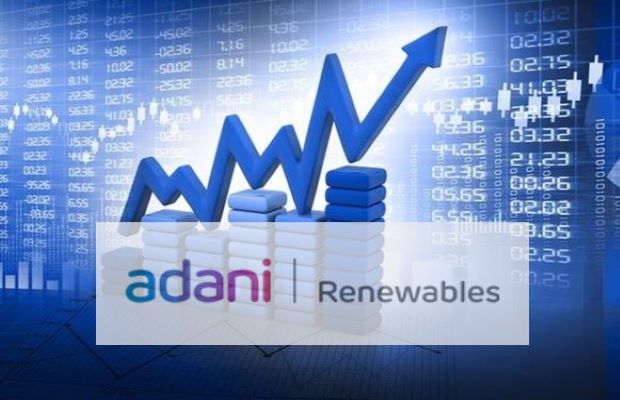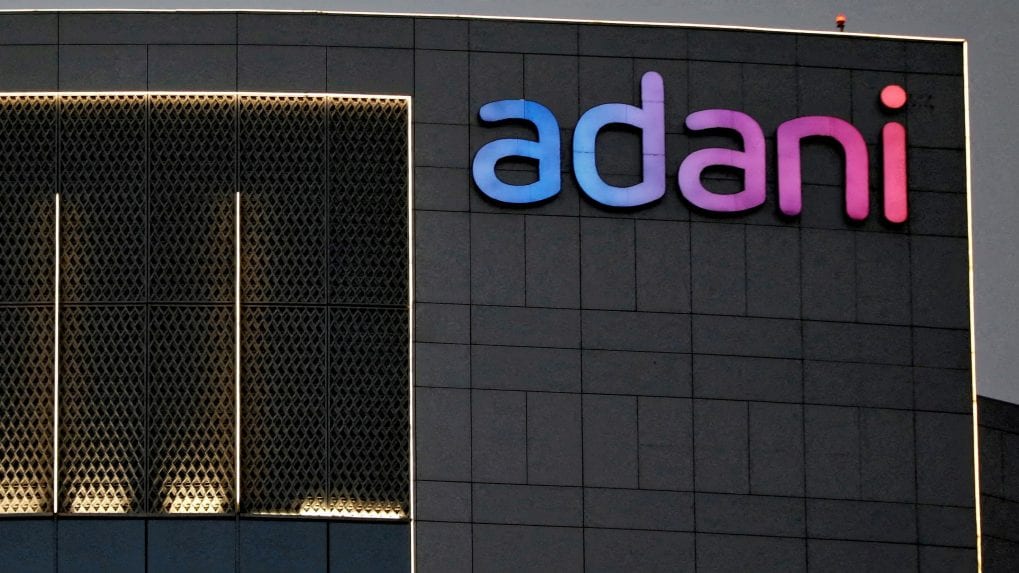Adani group EBITDA grows 42% in Q1

Adani group EBITDA grows 42% in Q1
Adani conglomerate’s significant year-on-year growth in pre-tax profit, especially with a 42% increase. This growth can be attributed to the success of various businesses within the group, including airports, power, and sea ports.
The reported all-time high EBITDA (Earnings Before Interest, Taxes, Depreciation, and Amortization) of Rs 23,532 crore in the April-June period is remarkable, as it’s almost on par with the full-year EBITDA of the FY19 fiscal year, which was Rs 24,780 crore.
The Adani conglomerate consists of a diverse range of businesses, with 10 listed companies under its umbrella. These companies cover a wide array of industries, including Adani Enterprises Ltd (the flagship incubator), Adani Ports & SEZ Ltd (ports business), Adani Green Energy Ltd (renewable unit), Adani Power Ltd (power utility), Adani Energy Solutions (electricity transmission firm), and Adani Total Gas Ltd (city gas business).
While the conglomerate has experienced impressive growth, it’s also notable that the group maintains a net debt of Rs 18,689.7 crore. However, this debt is offset by a substantial cash balance of Rs 42,115 crore, which indicates that the group has maintained a healthy cash reserve despite its debt obligations.
Overall, this information showcases the Adani conglomerate’s diverse portfolio and its ability to drive growth across various sectors, leading to substantial profit and a strong financial position.
The core infrastructure and utility platform’s EBITDA and its significance:
1. Core Infrastructure and Utility Platform:
The conglomerate’s core infrastructure and utility platform is a fundamental aspect of its business strategy. This platform encompasses key sectors such as power generation, transmission, ports, and other critical infrastructure. These sectors are known for their stability and the generation of consistent, reliable cash flows.
2. EBITDA Contribution:
The core infrastructure and utility platform have played a significant role in the conglomerate’s financial performance. It generated an EBITDA (Earnings Before Interest, Taxes, Depreciation, and Amortization) of Rs 20,233 crore. Importantly, this EBITDA accounts for an impressive 86% of the total portfolio EBITDA. This demonstrates the substantial contribution of these core sectors to the overall financial health of the conglomerate.

3. Stability and Predictability:
One of the key characteristics of the core infrastructure and utility platform is its stability. These sectors often operate with long-term contracts, regulated tariffs, and essential services that ensure a steady stream of revenue. This stability results in a high level of earnings predictability and visibility over extended periods, often spanning decades. This predictability is crucial for long-term planning, investment, and financial stability.
4. Liquidity and Financial Strength:
The robust profits generated by the core infrastructure and utility platform have had a direct impact on the conglomerate’s financial strength. The substantial EBITDA contribution has led to the portfolio gaining a very strong liquidity position. In business terms, liquidity refers to the ability to convert assets into cash quickly, allowing the company to meet its financial obligations and seize new opportunities.

5. Long-Term Outlook:
The success and stability of the core infrastructure and utility platform align with the conglomerate’s long-term outlook. By focusing on sectors that generate consistent cash flows and predictable earnings, the conglomerate can ensure sustainable growth and weather economic fluctuations more effectively.
6. Economic Impact:
The conglomerate’s emphasis on core infrastructure sectors has broader economic implications as well. Reliable and well-maintained infrastructure is essential for a country’s economic development. It supports industries, facilitates trade, and enhances overall quality of life. By excelling in these sectors, the conglomerate contributes to the growth and stability of the regions in which it operates.
7. Diversification Strategy:
While the conglomerate’s core infrastructure and utility platform contribute significantly to its financial strength, it’s important to note that diversification across various sectors also mitigates risks. While these core sectors provide stability, the conglomerate’s other businesses contribute to a well-rounded portfolio that can adapt to changing market dynamics.
In conclusion, the conglomerate’s focus on its core infrastructure and utility platform has proven to be a strategically sound decision. The stable and assured cash flows from these sectors have resulted in substantial EBITDA and financial strength, providing the conglomerate with liquidity and the ability to plan for the long term. This approach not only benefits the conglomerate itself but also has positive implications for the economy and the communities it serves.
The Adani Group’s response to the challenging situation it faced after the Hindenburg report is a notable example of strategic adaptation and recovery in the face of adversity. Here’s an expanded view of their response:
1. Operational Performance Improvement:
After the Hindenburg report’s damaging allegations, the Adani Group recognized the need to address concerns and rebuild trust. One of their strategies was to focus on improving the operational performance of their existing businesses. By enhancing efficiency, productivity, and profitability in their core operations, the group aimed to demonstrate its financial strength and stability.
2. Disputing Allegations:
The Adani Group promptly denied all the allegations made in the Hindenburg report. This move aimed to protect their reputation and address potential doubts that investors and stakeholders might have had due to the report’s claims. A robust response to such allegations is crucial in maintaining investor confidence.
3. Recasting Ambitions and Scrapping Acquisitions:
In response to the crisis, the Adani Group recalibrated its ambitions and reevaluated its expansion plans. They chose to scrap certain acquisitions, possibly to ensure that their focus remained on consolidating their existing businesses and addressing the concerns raised by the report.
4. Debt Prepayment and Cash Flow Management:
Concerns about cash flows and borrowings were critical aspects highlighted by the Hindenburg report. The Adani Group proactively addressed these concerns by pre-paying debt. This strategic move helped allay fears related to their financial obligations and demonstrated their commitment to maintaining a healthy balance between debt and cash flow.
5. Scaling Back New Projects:
In response to the crisis, the Adani Group adjusted the pace of its spending on new projects. This measured approach allowed them to allocate resources more prudently and focus on their core strengths while minimizing financial risk.
6. Rebuilding Investor Confidence:
Regaining investor confidence was paramount for the Adani Group. Their comeback strategy involved communicating clearly and transparently with stakeholders. Sharing their recovery plan, operational improvements, and financial decisions helped rebuild trust and demonstrate their commitment to long-term growth.
7. Focus on Long-Term Sustainability:
The Adani Group’s response indicates a commitment to long-term sustainability over short-term gains. By addressing concerns related to financial stability, cash flows, and operational performance, they positioned themselves for enduring success.
8. Learning from Challenges:
Facing adversity often brings opportunities for learning and improvement. The Hindenburg report might have been a catalyst for the Adani Group to reevaluate their strategies, strengthen their governance, and fine-tune their risk management practices.
In conclusion, the Adani Group’s response to the challenges posed by the Hindenburg report highlights their ability to adapt, strategize, and rebound from setbacks. Their emphasis on operational excellence, financial stability, transparency, and sustainable growth demonstrates their resilience and determination to overcome obstacles and secure a stronger future.
Certainly, here’s a more expanded narrative explanation of the various aspects mentioned in the statement:
The Adani Group has demonstrated a focused and resilient strategy in response to challenges, particularly after the Hindenburg report. This report had made serious allegations, causing a significant drop in the group’s stock value. To counter these setbacks, the group took several strategic steps that have enabled them to regain stability and momentum.
In their statement, the group highlighted the successful performance of their incubation efforts under the flagship Adani Enterprises. Businesses such as airports, green hydrogen, and others have witnessed impressive growth, almost doubling their profits on a year-on-year basis. These achievements contributed significantly, accounting for 7% of the portfolio’s EBITDA. This underscores the group’s ability to nurture and develop new ventures for long-term success.
Two sectors that stood out prominently in their performance were Adani Green Energy Ltd and the cement business. Adani Green reported a substantial 67% rise in EBITDA to Rs 2,200 crore, driven by an increase in operational capacity by 43% to 8,316 MW. Similarly, the cement business exhibited a robust operating performance, resulting from cost optimization and better synergies. The EBITDA per tonne increased significantly, driving a 54% YoY growth in EBITDA to Rs 1,935 crore.
However, the group also addressed certain challenges. Adani Enterprises Ltd experienced a 12% decline in EBITDA due to a correction in coal prices and volume stabilization. Additionally, the FMCG business faced a 64% drop, attributed to high-cost inventory. These challenges highlight the complexities of managing diverse businesses, each subject to its market dynamics.
The group’s diversified approach and accomplishments extend beyond the financial sphere. The growth in the airport business led to a 27% increase in passengers, showcasing the business’s ability to attract and serve customers effectively. Furthermore, the road business’s expansion by constructing an additional 79.8 lane km and the significant increase in solar module volumes by 87% to 614 MW underscore the group’s commitment to infrastructure development and renewable energy.
Adani Energy Solutions, now known as Adani Transmissions Ltd, expanded its electricity transmission network considerably, contributing to the improvement of the power distribution landscape. Adani Gas’s expansion by adding CNG stations and providing piped cooking gas to households aligns with the group’s efforts to promote cleaner and more accessible energy solutions.
The group also demonstrated excellence in key sectors. Adani Ports and SEZ reported their highest-ever quarterly cargo volume of 101.4 million tonnes, reflecting their crucial role in trade and transportation. Adani Power’s commissioning of a 1,600 MW ultra-supercritical power plant in Godda showcases their commitment to meeting India’s growing energy demands. Moreover, the operational status of a 17 MW data center in Chennai reflects the group’s investments in cutting-edge technology infrastructure.
In conclusion, the Adani Group’s response to challenges has been marked by resilience, strategic repositioning, and diversification. Their achievements in multiple sectors, coupled with a commitment to sustainable practices and growth, showcase their capacity to navigate complex situations while contributing significantly to India’s economic and infrastructural advancement.




